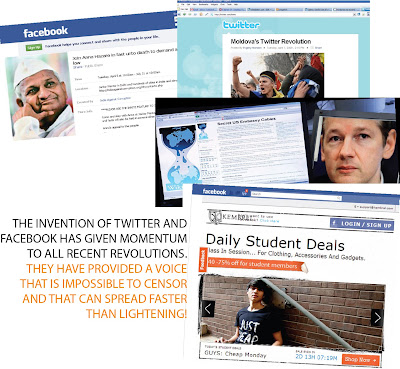THERE’S NO PLACE LIKE INDIA
We all love ‘Anna’! He seems to have united India and its youth. But is India really one, especially when it comes to business? This is one country where all the laws of marketing will fail, because it’s so diverse. If you have just one theory, then it will not take you anywhere. India changes every 200 km. Yes, a few basics remain the same across India, but a lot changes too. For starters, language changes (we have 192 official languages and dialects), culture changes, traditions and festivals change, food habits change. If this is not enough, think about it – even the geography and political views change. Yes, it is vast, but it is not an easy market. Only the hardy marketers will be able to survive and thrive here.
THOSE WHO MISUNDERSTOOD INDIA
A lot of multinationals have come into India but failed – not because their products were not good, but because they failed to understand India’s culture. Globalisation has been the new trend, but ‘standardisation’ will not work always. As a marketer, you need to be sensitive to each culture’s identities and its unique regional preferences and customise your product offerings.
Our local markets are not barren as many multinationals thought. There are very strong players in almost every local market. Take the case of Kellogg’s. Apart from the taste not really matching the Indian palette (we like to put warm milk with sugar in our cereals, unlike the west that has it with cold milk), it under estimated the presence of local competitors like Mohun cornflakes (priced lesser than Kellogg’s) and Champion (whose price is almost half as that of Kellogg’s). Retail chains may never be able to understand the bonhomie that people share with their local kirana shops or the Mom & Pop stores as they are popularly called in the West. They share a bond and enjoy a mutual level of trust (giving things even on credit to their favorite customers) that big retail chains will never be able to enjoy. CavinKare challenged the multinationals in various segments. Earlier, it was Clinic shampoo and Fair & Lovely fairness cream (both from HUL) that were touted as the only good options. But homegrown brands like CavinKare are giving them a tough fight. CavinKare used sachets to sell its shampoos. It understood that the consumer was not willing to buy a whole bottle. But a small sachet was a luxury she could indulge in. [Today, 40% of the shampoo market consists of sachet buyers.] It used India’s weakness for ayurvedic products and ensured that its fairness cream Fairever – with saffron and milk – promised not just fairness but also good skin, and quickly cornered a significant chunk of the market share from the giant HUL and its brand Fair & Lovely. So strong has been this positioning that it made Fair & Lovely change its positioning from “badle aap, badle zindagi” to “gorepan se kahi zyaada, saaf gorapan”, meaning “not just fairness but a clear skin too”. CavinKare understood the Indian consumer and her changing needs, and this homegrown brand has become a formidable competitor today.
Going the ayurveda way, Emami too has managed to keep the biggies out of the way with unique Indian brands like Boroplus, Navratan oil and Fair & Handsome cream, that command a significant market share today. Marico’s Parachute oil is way ahead of HUL’s Nihaar. Agreed. Products like hair oil are distinctly Indian and MNCs may not have an edge here, but even when it comes to products like toothpaste and hair color, our Indian brands are doing a pretty good job! Dabur toothpaste is giving Colgate and HUL a tough fight. In the hair color sector, Godrej still has the largest market share (more than 30%),with L’Oreal coming a distant second (a market share of 19%).
Just because a brand has a foreign tag is no guarantee that it will be perceived as superior. It needs to match the local sensibilities too. KFC entered India with its American menu of chicken wings and wraps in Bangalore. The Indian consumer did not identify with it and it had to pack its bags and leave. In 2004 when it did come back it had a vegetarian menu, rice meals and Indianised chicken recipes. It survived.
Tupperware designed a beautiful ergonomically sound, rectangle spice box for the Indian housewife. It bombed. She was used to a round one for years and however good the rectangle box it did not work for her.
Marketers with a keen sense of observation have succeeded here. Maybe not many people can afford an Omega or a Rolex, but people love to own a good watch, and no one grabbed this opportunity better than Titan. It realised that the only watches available in India for the low-end were poor in quality and lacked after-sales services or even warranties. Today, Titan dominates the watch market and offers very good quality watches with warranties and service networks for not just the consumers at the low-end but also, pure gold watches for the ones with deeper pockets. This local hero is a big, dominant player.
These local champions have overcome all obstacles and have made their own roads. If Indian roads were not good, then Tata Motors came up with cars and trucks that had a strong and rigid suspension system. Not state of the art, but its vehicles had easy maintenance. Poor infrastructure could not deter Amul from going ahead and conquering the market. If farmers could not reach out to the company, then the company decided to go to them. Amul is an amalgamation of more than 13,000 cooperatives. It installed Automatic Milk Collection Systems in the villages, where farmers went and deposited their milk. It was immediately measured for volume and fat content and the farmer was paid instantly. It worked well for both the parties, and till date, Amul rules the Indian markets. Open your refrigerator and you will find the Amul butter packet there too!
The reason some Indian brands have become so strong is that they have understood this country and its problems well, and have found innovative ways to work around them. ITC (which began operations as an MNC in India in 1910, but whose ownership has progressively Indianised over the years) – has been in India for close to 100 years now and has understood its problems like no one else has. It realised that farmers had no access to markets or any information about markets. So it installed a PC in the house of the largest farmer in the village, providing him and the rest of the village, a window to the world. This not just improved the knowledge and awareness of the farmers, but made them fall in love with ITC. Any competitor would find it tough to break this bond. It also ensured that ITC got a steady supply of good quality soybean for its processing plant.
It takes just one strong homegrown brand to shut out a huge multinational. Only those have got it right can do so.
THOSE WHO UNDERSTOOD INDIA
While many MNCs faltered because some assumed the Indian market was behind their home market, or thought it was not yet ready for superior products, other failures thought that the “foreign” tag would be enough to attract the consumers. Thus they became myopic and failed to adapt or innovate. Such brands failed or were forced to leave the Indian market, even as so many local brands filled the void. However, there have been a whole lot of MNCs who have kept their eyes open and survived. They realised that the product could be made in any part of the world but it was important that the product be “Made FOR India” for it to succeed in this market.
McDonalds knows that food is the most culturally sensitive product, and everywhere it has gone, it has ensured that its menu is customised to suit Indian tastes. Pizza Hut has a full-vegetarian restaurant in places like Gujarat et al, where the population is mostly Jains. Nowhere in the world will you find another only vegetarian Pizza Hut. LG believes not just in localisation but micro-localisation. Its microwaves have an idli mould for the south- Indian market, and a plate for heating kulchas for the north. It sells bright colored refrigerators in Punjab, for it does not get stained easily with the strong spicy and oily cooking of that region. Samsung’s phones now have an Indian calendar too. Perfetti Van Melle knew its old distribution system was weak, so it created its own network of 5000 distributors, did not give up on the rural market and today, is way ahead of competitors. Hyundai saw that most foreign car manufacturers were selling their old models in India. It entered with new models. It even customised the Santro to suit Indian roads. It used its technical expertise, which the local manufacturers did not have and today, it holds the number 2 spot in the automarket – just behind Maruti, which has been in this market for 25 years.
THOSE WHO WILL BE THE NEW MNCS
As these homegrown brands learnt the hard way to survive in developing markets like India, they found a whole new set of business opportunities opening up for them in other developing markets. These markets had similar problems and opportunities. So Tata Motors found that its vehicles were in demand in many African countries where the infrastructure was not good either. ICICI Bank and many others too saw an opportunity to do business in the emerging markets of Sri Lanka, Africa, China, Bangladesh, Indonesia et al. They have mastered the art of functioning and adapting in difficult markets, and are thriving like never before in these places. These new emerging markets are the future of business, and with markets of the developed world shrinking, it is only those companies who can do business in these very markets that will survive and thrive. The MNCs of the developed world are suddenly realising that the companies they once brushed aside as small homegrown brands, have become the new and powerful multi -national giants of the emerging markets.
India is diverse and difficult. But it has proven to be an apt training ground for its homegrown brands, to prepare themselves for the future. Those who have succeeded and survived here, will be able to survive anywhere, after all there is no place in the world like India!


Comments
Post a Comment